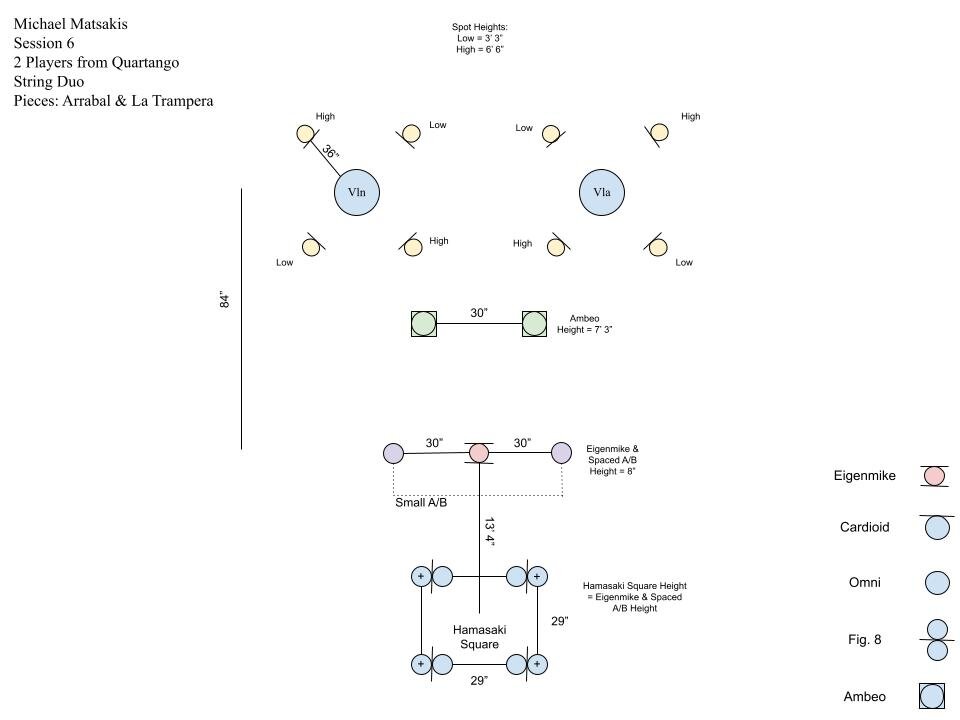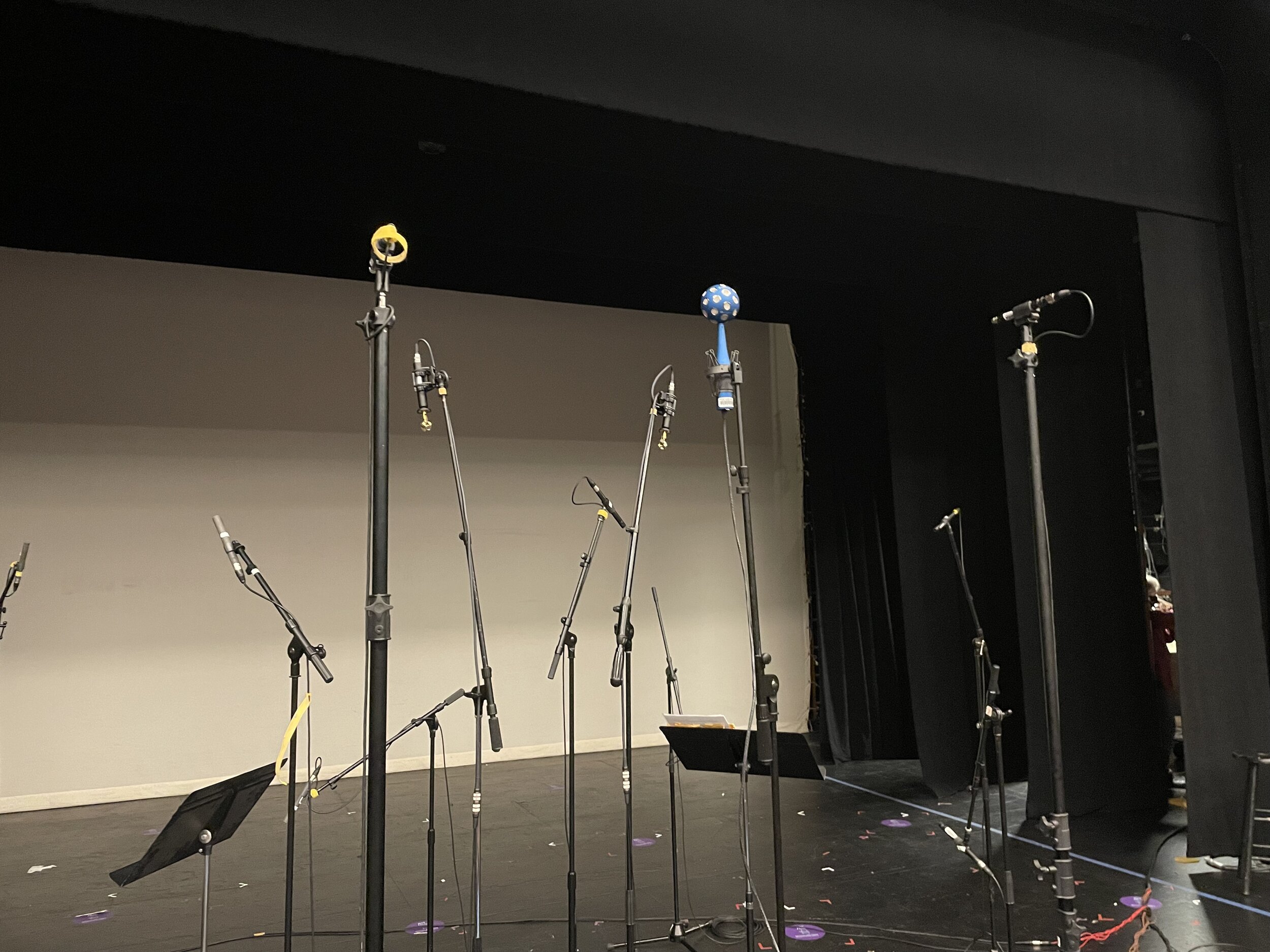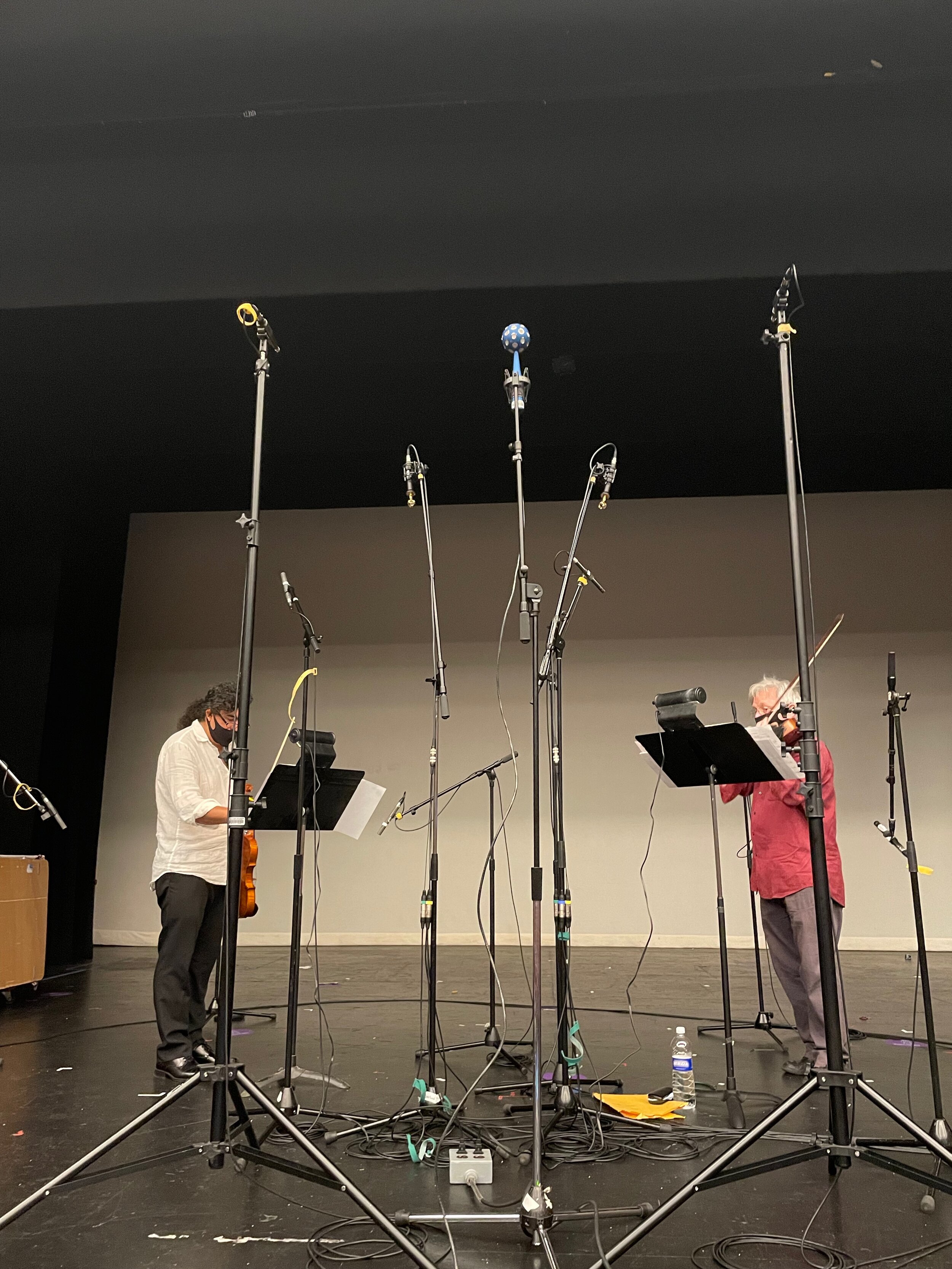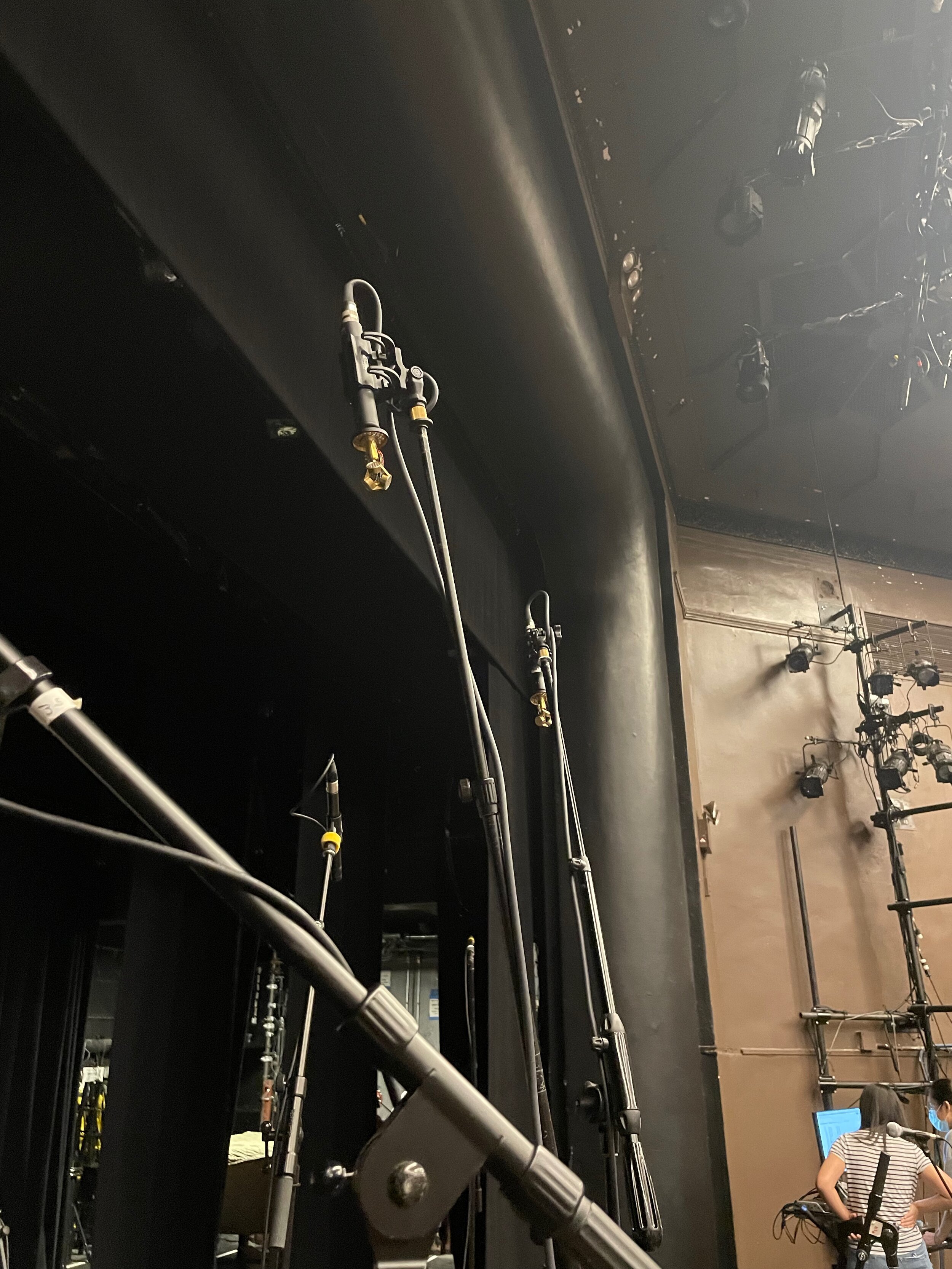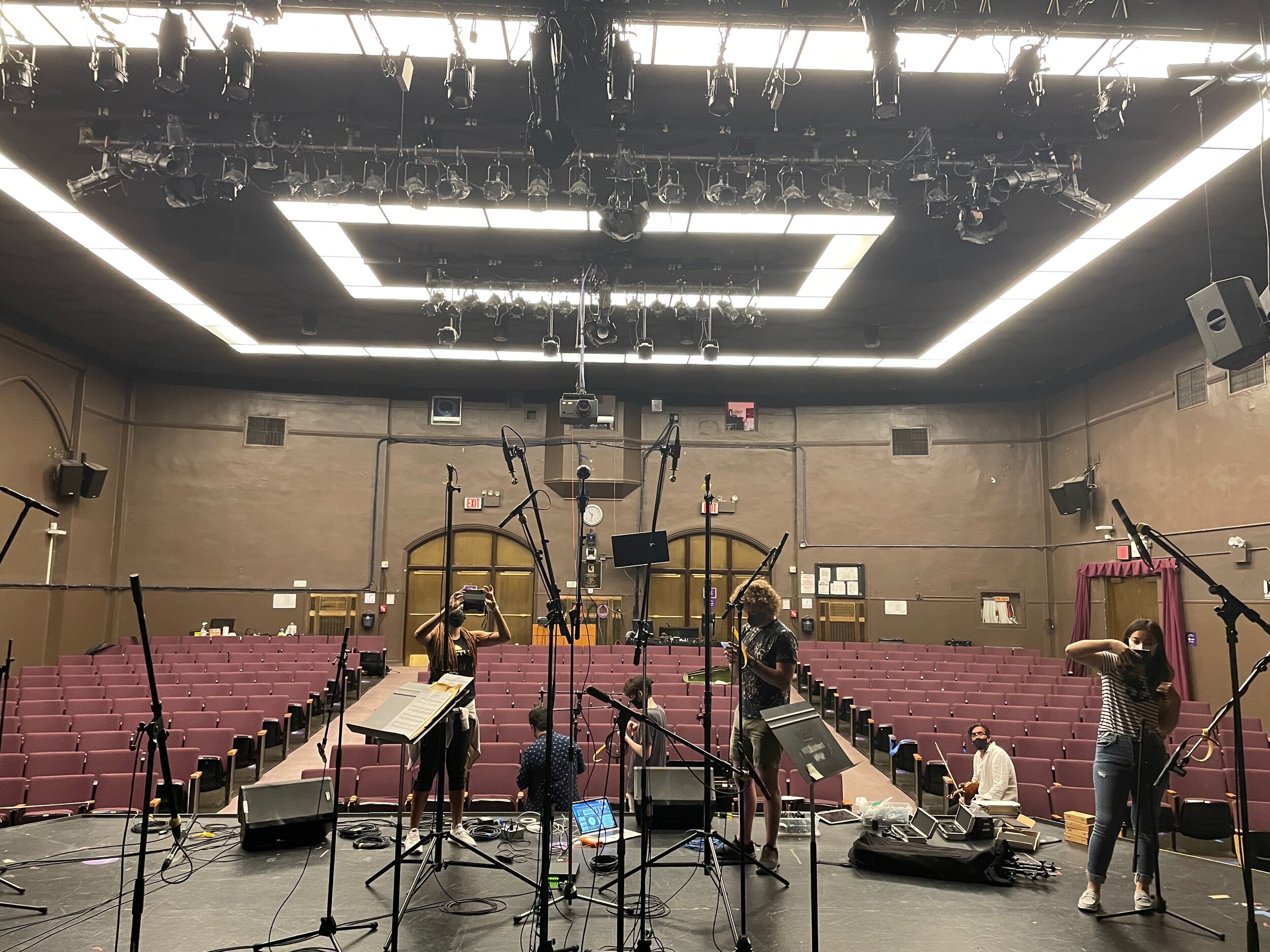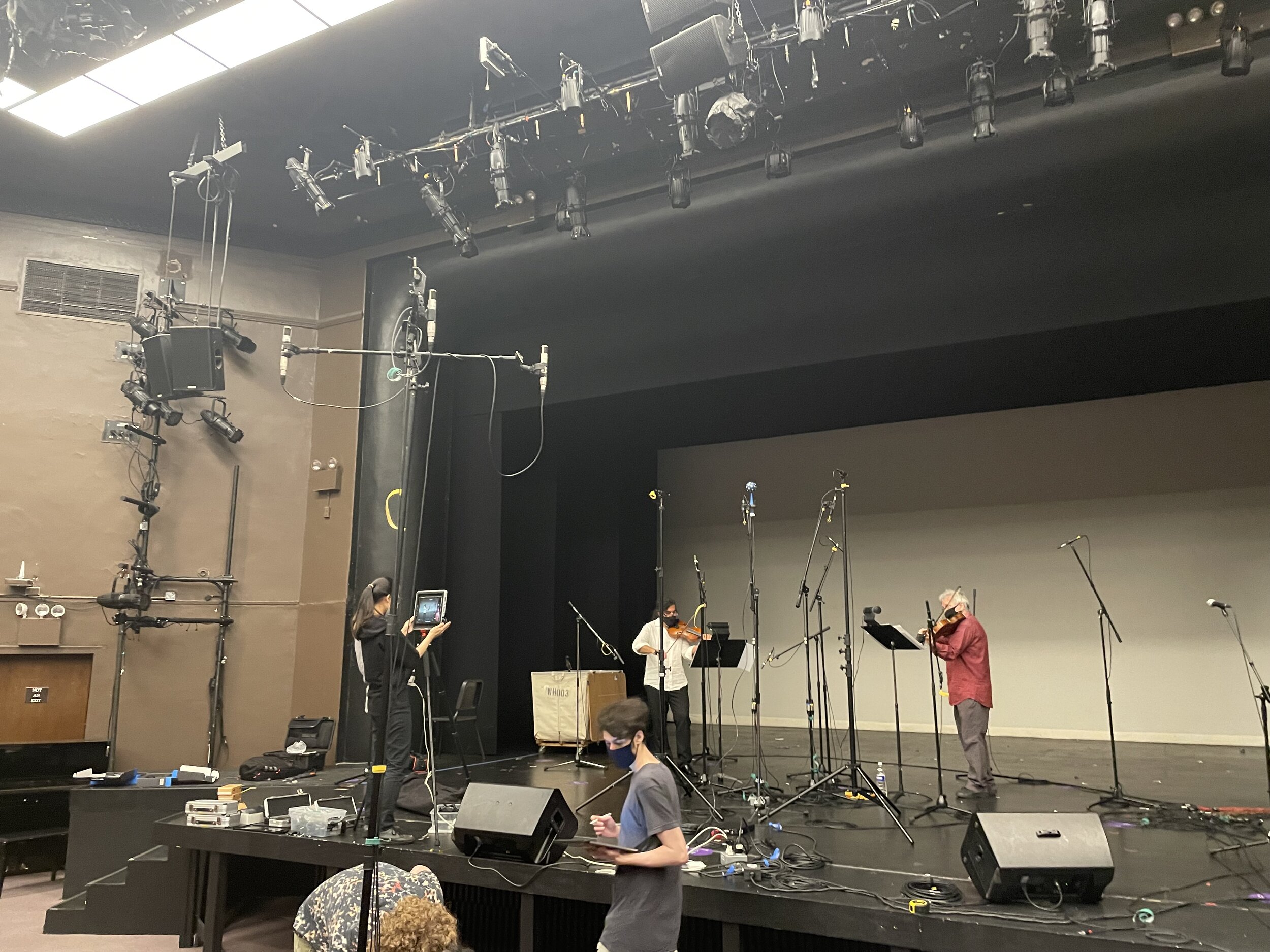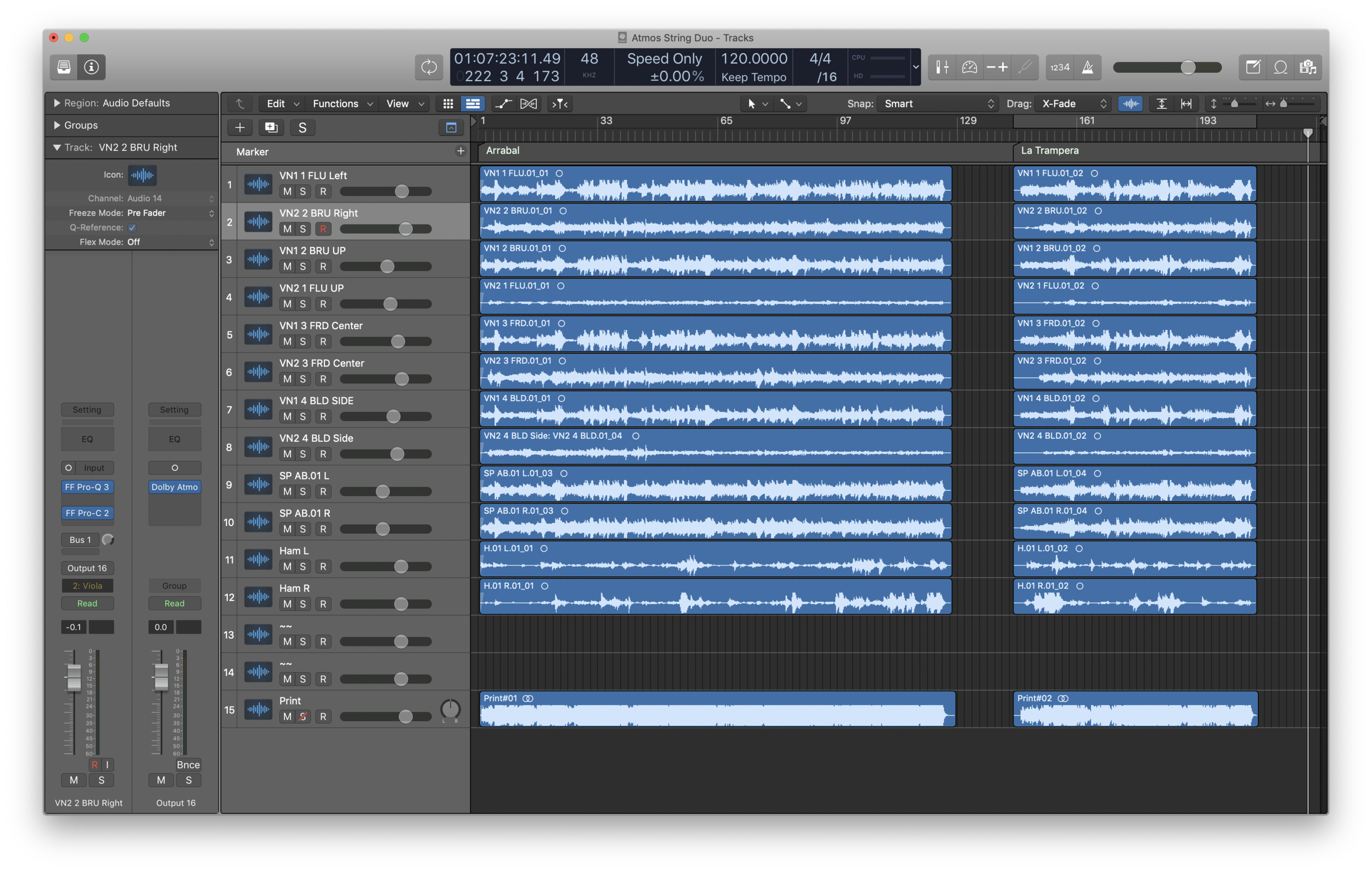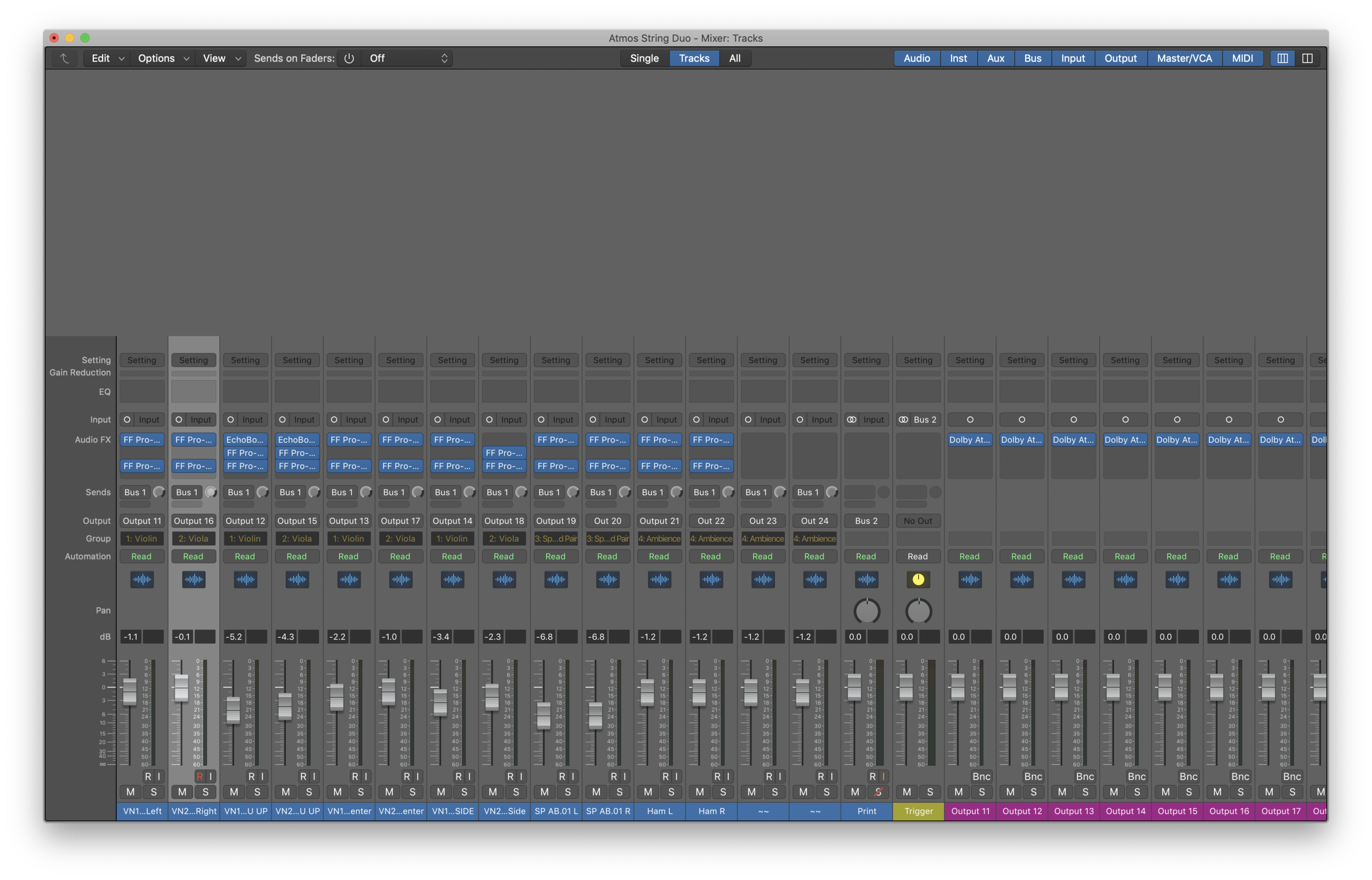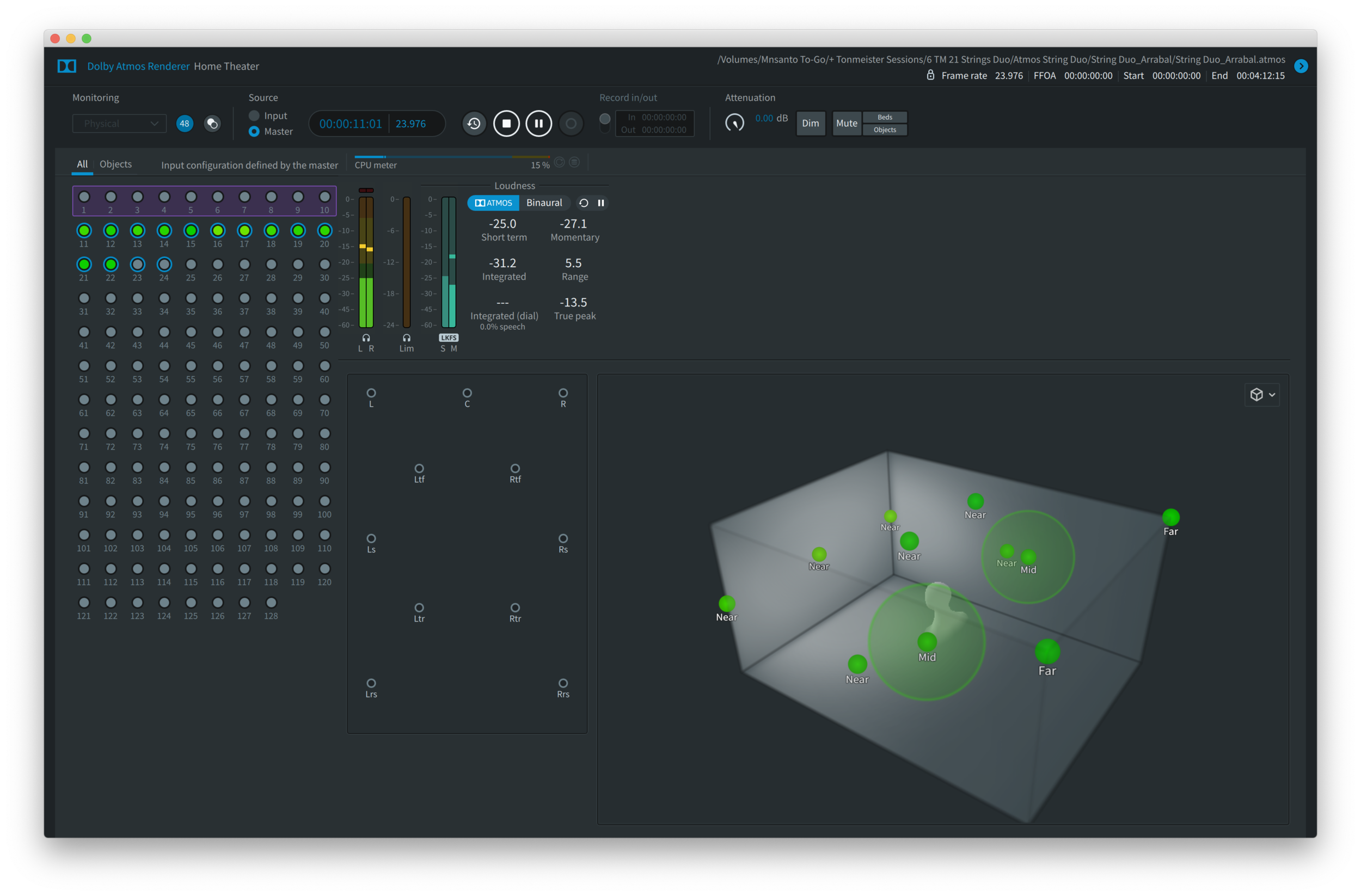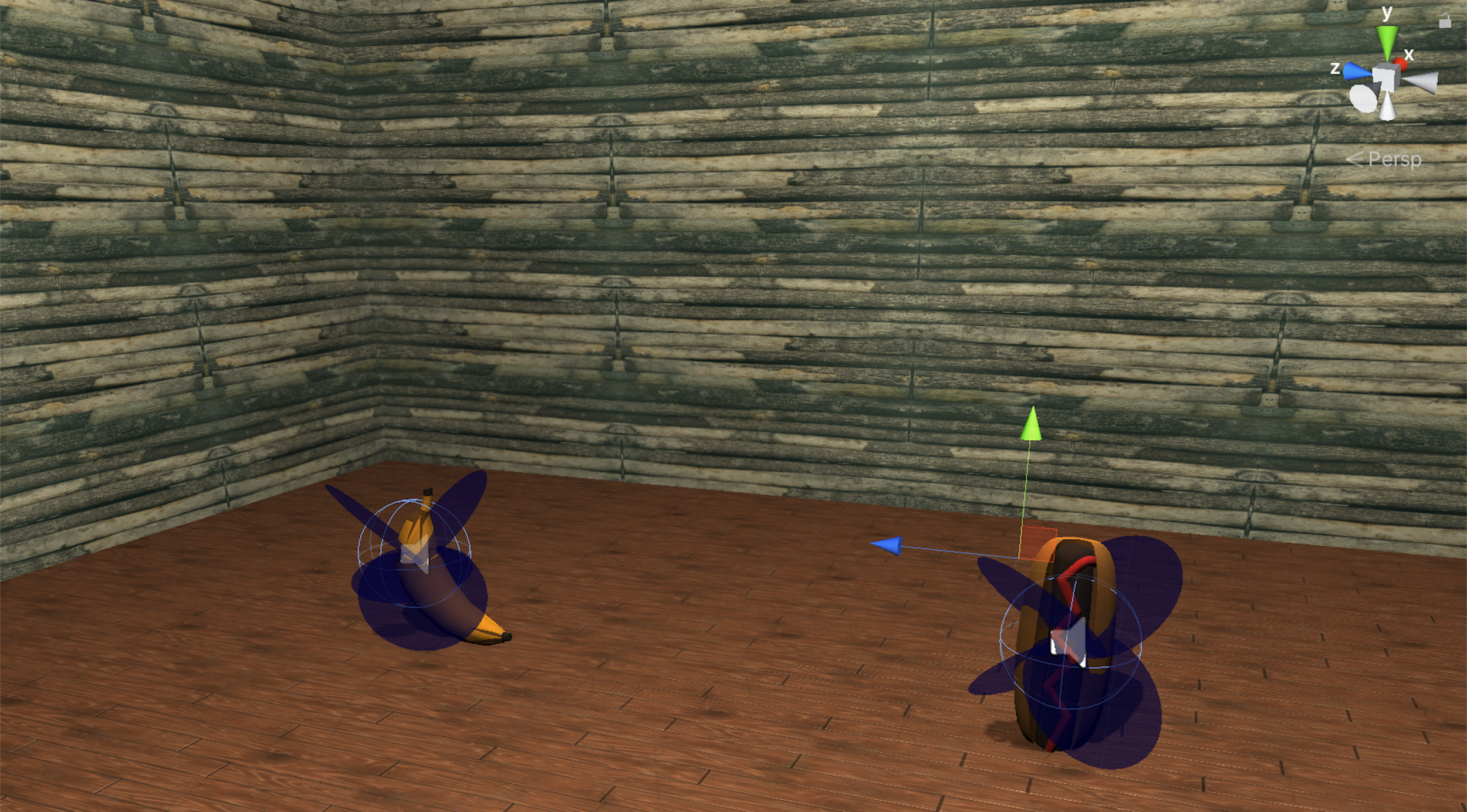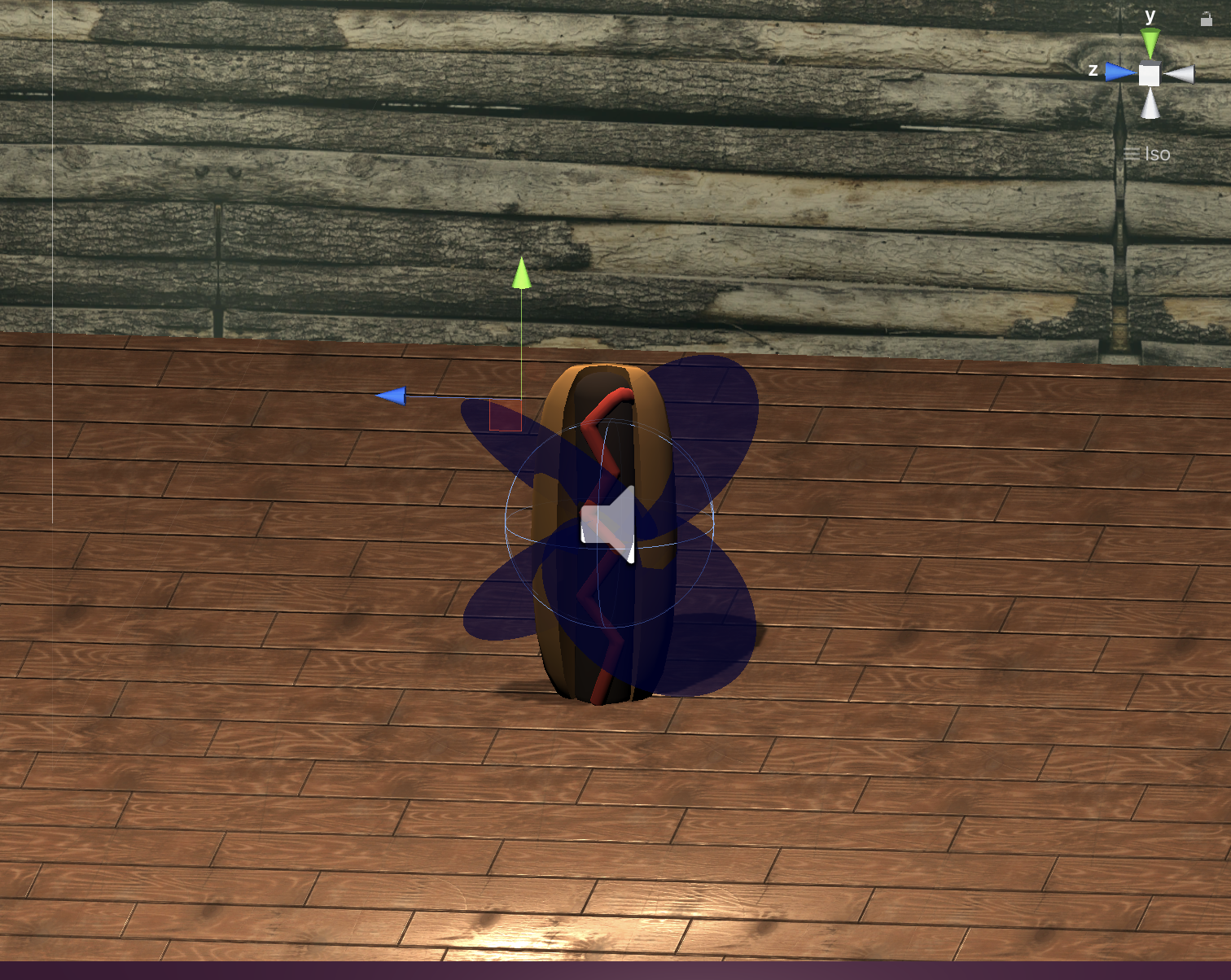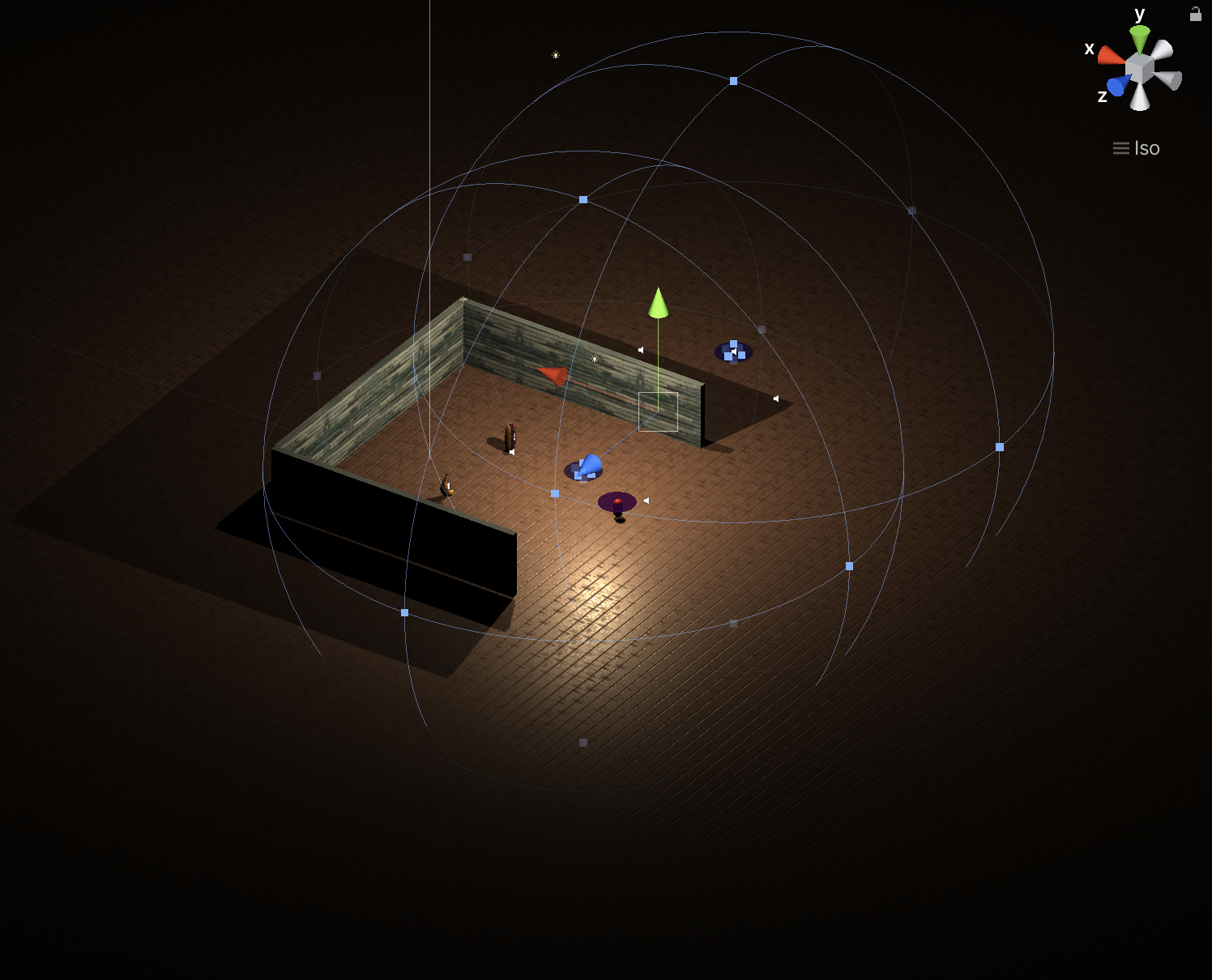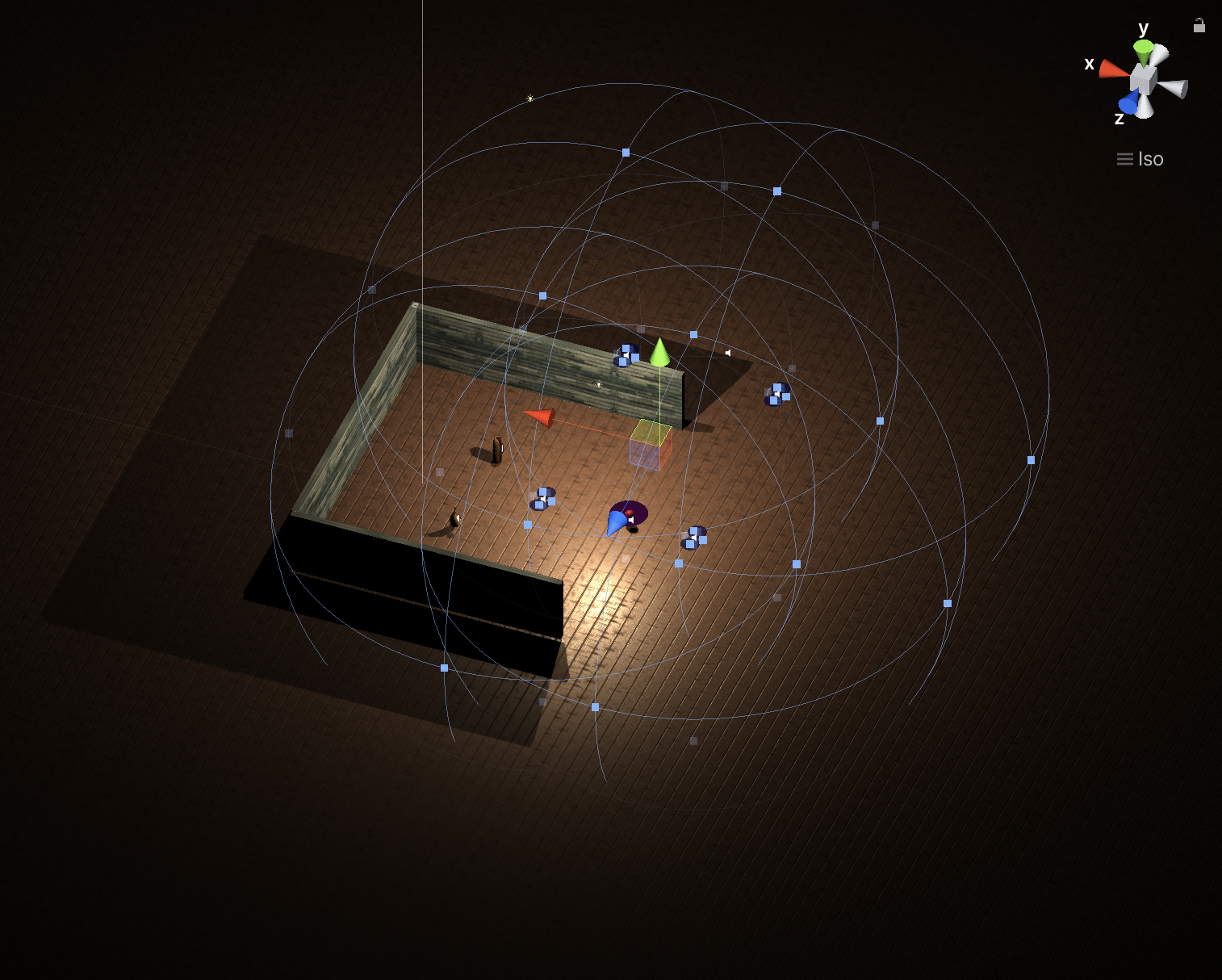Violin & Viola
This is the first session where we attempted to capture a performance for 3D reproduction inside of a video game engine. We wanted to use multi-microphone arrays to capture the radiation characteristics of the strings. This would enable the listeners position in relation to the sound source affect the timbre of the source, giving them more realistic directional cues from the sound objects.
To attempt this we had the idea of using a reverse-tetra configuration of microphones around each player. This placed four microphones in four diagonal corners of the player. This configuration was reassembled in Unity. This type of recording we began referring to as a “Holographic Recording.” Meaning, a recording that captures radiation characteristics of sound sources with the intention of being played back in either a virtual environment with six degrees of freedom or in real life out of a 3D speaker.
We also wanted to capture good ambience and spot miking for a Dolby Atmos mix. To do this, we put a Hamasaki square in the auditorium and a small spaced A/B on the stage. The reverse-tetras each had microphones in a good position for a spot mic to use but we also put up some ambisonic microphones again to further test their capabilities as spot microphones. Our experimentation in this stage and the previous, led us to believe that ambisonic microphones make excellent spot mics, but they don’t capture a very solid low end. In the next session (The Jazz Quartet) we attempt to solve this shortcoming with the addition of a coincident omni microphone. The Eigenmike was also omitted from my mixes.
You can experience the Holographic Sound recording here on my itch.io page.
